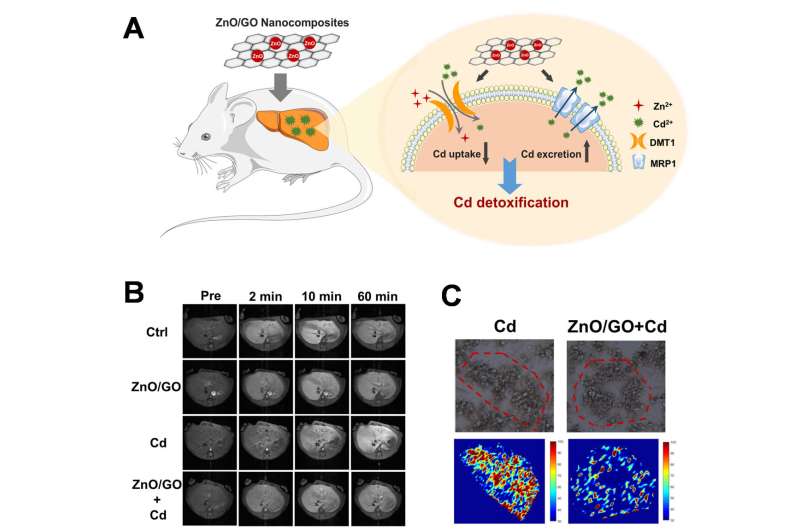Zinc oxide/graphene oxide nanocomposites can efficiently inhibit cadmium-induced hepatotoxicity

A research team led by Profs. Xu An and Liu Yun from the Hefei Institutes of Physical Science (HFIPS) of the Chinese Academy of Sciences (CAS) has demonstrated the effective, specific and safe detoxification effect and its related mechanism of zinc oxide/graphene oxide (ZnO/GO) nanocomposites against cadmium (Cd)-induced hepatotoxicity, with the help of 9.4 T high field magnetic resonance imaging (MRI) in the High Magnetic Field Laboratory of HFIPS.
Relevant results were recently published in Environment International.
Epidemiologic and laboratory studies have associated environmental Cd exposure with various liver damages. However, there is no effective and specific detoxification method for Cd poisoning in current clinical treatment. The symptomatic treatments and non-specific metal ion chelating agent currently used in clinic have limited therapeutic effects and will inevitably cause adverse side-effects.
To solve this problem, the researchers synthesized ZnO/GO nanocomposites with good biocompatibility and indicated their advanced function against Cd-elicited liver damage at the in situ level in vivo using 9.4 T high field MRI.
According to the researchers, mechanistically, ZnO/GO nanocomposites competitively inhibited the cellular Cd uptake by releasing Zn ions and significantly promoted Cd excretion via targeting the efflux pump of multidrug resistance associated protein1 (MRP1).
The synthesized ZnO/GO nanocomposites with excellent detoxification capacity and favorable biosafety will hold great promise for potential applications in Cd poisoning, especially for occupational exposure population who exposed to Cd in their daily work.
More information: Yun Liu et al, Zinc oxide/graphene oxide nanocomposites efficiently inhibited cadmium-induced hepatotoxicity via releasing Zn ions and up-regulating MRP1 expression, Environment International (2022). DOI: 10.1016/j.envint.2022.107327
Journal information: Environment International
Provided by Chinese Academy of Sciences



















